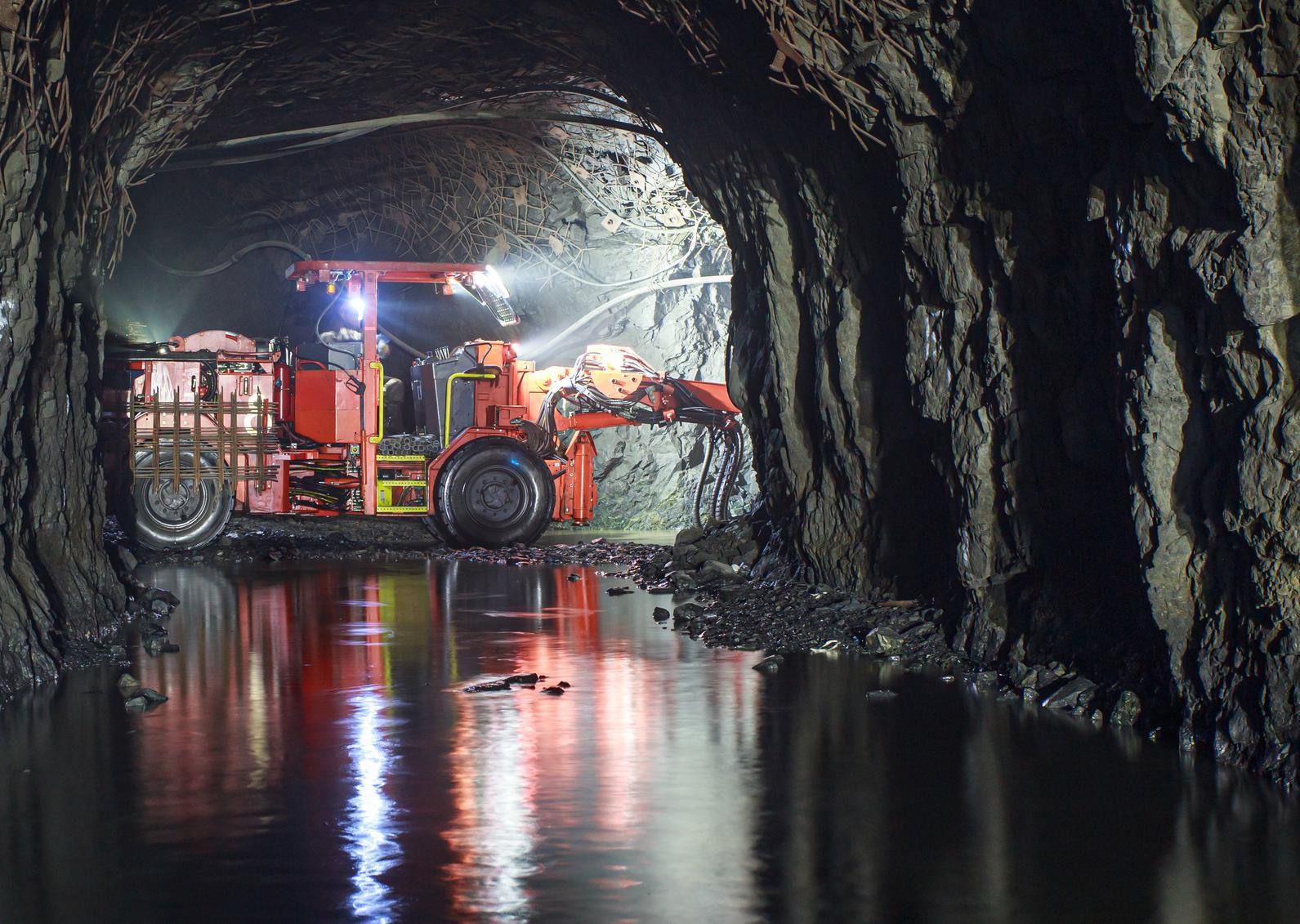Mining Industry Screening: Drug Testing, Background Checks & Occupational Health
In the mining industry, one mistake can cost more than just time—it can cost lives. So, why leave your team's safety to chance?
At Health Street, we provide the robust drug testing and background checks your workforce needs to stay sharp, compliant, and reliable. The truth is, no one has time to deal with bad hires or risky behavior—especially when the stakes are so high. Let us help you keep your operations safe and your workforce trustworthy with our top-tier screening solutions.
Protect your crew and stay compliant. Call (888) 378-2499 or register online to set up drug testing and background checks.

Mining Safety Stats: The Need for Proper Employee Screening
The mining industry has seen its fair share of catastrophic events. Since 1839, there have been 726 mining disasters with 5 or more fatalities per disaster. In fact, these incidents have claimed the lives of over 15,000 miners, with an average of 20 major accidents happening annually. A large portion of these disasters is caused by preventable issues such as explosions, roof falls, and transportation accidents, which often result from human error or failure to follow workplace safety protocols.
As one of the world's most crucial energy sources, coal continues to power a significant portion of global energy needs. However, coal mining accidents remain a major concern, especially as mining operations go deeper underground. Studies reveal that over 90% of coal mine accidents are linked to human factors, often resulting from unsafe behaviors and actions taken by workers. These behaviors, when combined with the increasing complexity of deeper mining operations, create an environment where risky actions can easily lead to catastrophic events.
To mitigate these risks, implementing thorough mining drug tests, occupational health tests, and background screenings is essential to ensuring that workers are physically and mentally fit for the demanding tasks they face underground.
Drug Testing Stats: Mining
-
According to a study by the Substance Abuse and Mental Health Services Administration, about 1% of mining workers have an opioid use disorder.
-
Another 5% have confirmed drug use in the last month.
-
17.5% of miners reported heavy alcohol use in the past month.
-
Workers in the extraction industry—which includes mining, quarrying, and oil and gas—have the highest overdose death rate involving natural and semi-synthetic opioids (like oxycodone and hydrocodone) compared to all other industries.
-
This group also has the second-highest death rate from synthetic opioid overdoses, including fentanyl.
Drug Testing Services
Other labs just sell tests. We deliver trust, speed, and real human support for the Mining industry. No hidden steps, no confusing options. Just straightforward, professional drug testing that does what it says it will.
Why Background Checks Matter in the Mining Industry
Mining is one of the most dangerous industries in the world, which is why it's so important for employers to run background checks on job candidates. While safety has come a long way—with mining deaths dropping over 90% in the last 40 years—tragedies like the 2010 Upper Big Branch disaster still happen. The year 2011 was the year with the fewest injuries and deaths ever recorded.
Although there's no federal requirement for background checks across the entire mining sector, several states, especially those with coal operations, do mandate them. In addition, many companies follow strict internal screening policies to reduce risk and keep their worksites safe.
Background Check Services
We run background checks 100% online. Fast, reliable, and built for the Mining industry. No scheduling, no delays. Just results.
Health Screenings Are Sometimes Required for Mining Industry
Health screenings are required by federal law in certain mining environments. Under MSHA's 2024 silica rule, mining companies must offer free medical screenings to workers who are exposed to high levels of respirable crystalline silica, a dust that can lead to serious lung diseases like silicosis and lung cancer.
The required screenings include:
-
A chest X-ray
-
A breathing test
-
A review of the miner's work and medical history
These exams help detect problems early so miners can take action to protect their health. While participation is voluntary, employers are legally obligated to offer these testing services if a worker's silica exposure exceeds certain levels.
So while not all mining jobs require health testing, it is mandatory for companies to offer it in specific conditions where there are known health risks.
Occupational Health Services
We keep occupational health moving. Quick access, clear communication, and compliance-ready services for the Mining industry.
Frequently Asked Questions
Do most jobs in the mining industry drug test?
Yes, most mining jobs in the United States require drug testing, especially in safety-sensitive roles. While there's no federal law mandating it, many states have their own requirements, and companies often follow strict drug testing policies voluntarily.
For example:
-
West Virginia Code §22A-1A-1 requires pre-employment drug testing for job applicants and random drug testing for miners.
-
Kentucky Revised Statutes (KRS) § 351.182 and 351.183 require drug and alcohol testing procedures as part of the miner certification process.
-
Virginia mandates substance abuse screening for certified miners under Senate Bill 1091.
Why is drug testing important in the mining industry?
Mining drug tests help ensure the safety and reliability of your workforce. Mining environments are high-risk, and drug use can impair judgment, motor skills, and reaction times, increasing the likelihood of accidents. Regular drug testing helps reduce the risk of human error, which is often responsible for catastrophic events in the field.
What types of drug tests do you offer for the mining industry?
We offer a variety of drug testing options, from 5-panel drug screens to comprehensive 25-panel screenings. You can select the substances you wish to test for, ensuring you get the most relevant results for your workforce's needs. Options include urine tests, hair follicle testing, and more.
How do background checks contribute to safety in mining?
Background checks help ensure that your employees are reliable, trustworthy, and qualified for the demanding tasks in the mining industry. They provide insights into a potential employee's criminal history, work experience, and qualifications, helping you avoid the risks of hiring unfit or dishonest workers.
How quickly will I receive the results from drug testing and background checks for mining?
Results from drug tests are typically delivered within 1-3 days, depending on the test type. Background check results may take longer, but we provide quick and reliable processing to ensure you have the information you need to make informed hiring decisions.
Why Health Street
Our expert team uses cutting-edge technology and certified labs to deliver accurate, fast results—typically within 1-3 days. Choose from a wide range of testing options to suit your needs, from a basic 5-panel test to an extensive 25-panel screening. Our pricing is competitive, so you pay only for what you need. Learn how we provide cost-effective solutions for background checks and drug testing.
When you partner with us, you can count on privacy, accuracy, and a seamless experience. We guide you every step of the way—from simple online registration to receiving your detailed report. Ready to protect your workforce? Trust Health Street for reliable, hassle-free screening solutions.
Citations
-
Bush, D. M., & Lipari, R. N. (n.d.). Substance use and substance use disorder by industry. Substance Abuse and Mental Health Services Administration. https://www.samhsa.gov/data/sites/default/files/report_1959/ShortReport-1959.html
-
Kentucky Legislature. (n.d.). KRS § 351.182 – Drug and alcohol testing required for certification. Retrieved March 28, 2025, from https://apps.legislature.ky.gov/law/statutes/statute.aspx?id=47733
-
Kentucky Legislature. (n.d.). KRS § 351.183 – Reporting and consequences of failed tests. Retrieved March 28, 2025, from https://apps.legislature.ky.gov/law/statutes/statute.aspx?id=44539
-
Mine Safety and Health Administration. (2024, April 18). Lowering miners' exposure to respirable crystalline silica and improving respiratory protection (Final rule). Federal Register, 89(76), 28444–28665. https://www.federalregister.gov/documents/2024/04/18/2024-06920/lowering-miners-exposure-to-respirable-crystalline-silica-and-improving-respiratory-protection
-
National Institute for Occupational Safety and Health. (n.d.). Mine disasters, 1839-2023. Centers for Disease Control and Prevention. Retrieved March 28, 2025, from https://wwwn.cdc.gov/NIOSH-Mining/MMWC/MineDisasters/Count
-
National Institute for Occupational Safety and Health. (n.d.). Mine disasters by accident type, 1839-2023 (N=726). Centers for Disease Control and Prevention. Retrieved March 27, 2025, from https://wwwn.cdc.gov/NIOSH-Mining/MMWC/MineDisasters/AccidentType
-
National Institute for Occupational Safety and Health. (n.d.). Mining disasters. Centers for Disease Control and Prevention. Retrieved March 27, 2025, from https://wwwn.cdc.gov/NIOSH-Mining/MMWC/MineDisasters/Table
-
Roelofs, C. (2023, March). U.S. Department of Labor research roundtable: Opioid use in the mining & excavation industries. U.S. Department of Labor, Mine Safety & Health Administration. https://www.dol.gov/sites/dolgov/files/OASP/evaluation/pdf/MSHARoundtable-Mar2023-508.pdf
-
Virginia Department of Energy. (2007). Substance abuse in Virginia's coal mines: Senate Bill 1091 – Questions and answers. Retrieved March 28, 2025, from https://energy.virginia.gov/coal/coal-mine-safety/documents/SubstanceAbuse/SubstanceAbuseQA.pdf
-
West Virginia Legislature. (n.d.). WV Code § 22A-1A – Substance abuse screening policy for coal mining operations. Retrieved March 28, 2025, from https://code.wvlegislature.gov/email/22A-1A/
-
Yang, L., Wang, X., Zhu, J., & Qin, Z. (2022). Risk factors identification of unsafe acts in deep coal mine workers based on grounded theory and HFACS. Frontiers in Public Health, 10, Article 852612. Retrieved March 28, 2025, from https://doi.org/10.3389/fpubh.2022.852612
-
Mine Safety and Health Administration. (n.d.). MSHA fact sheet - Injury Trends in Mining. U.S. Department of Labor. Retrieved March 31, 2025, from https://arlweb.msha.gov/mshainfo/factsheets/mshafct2.htm

















